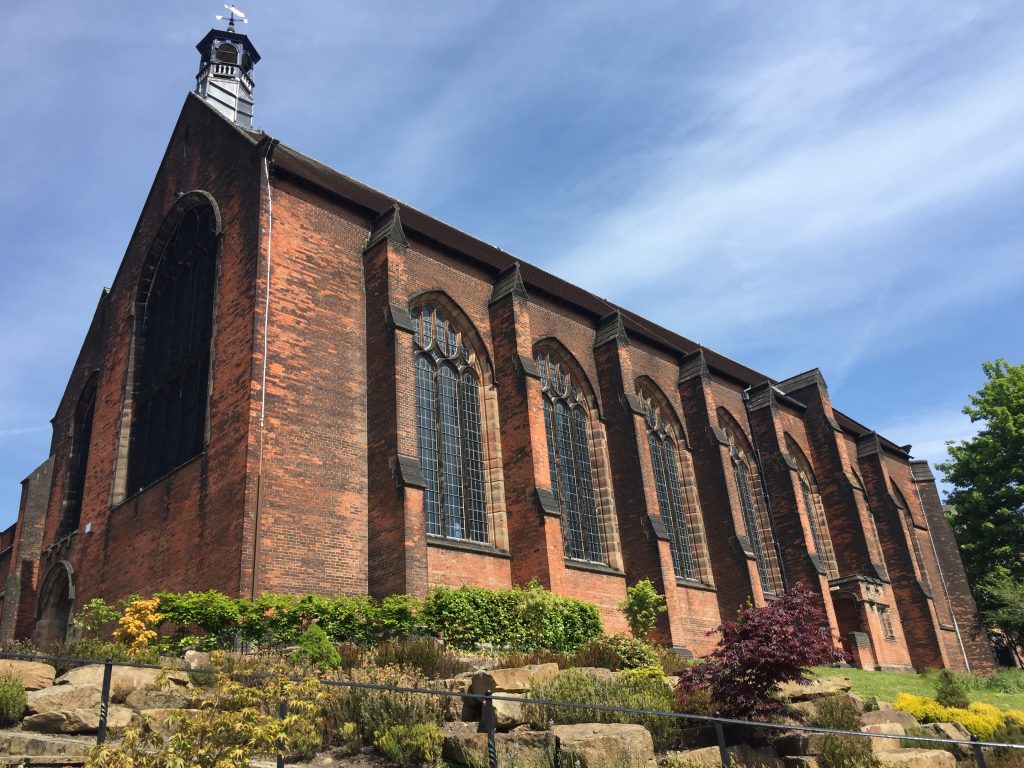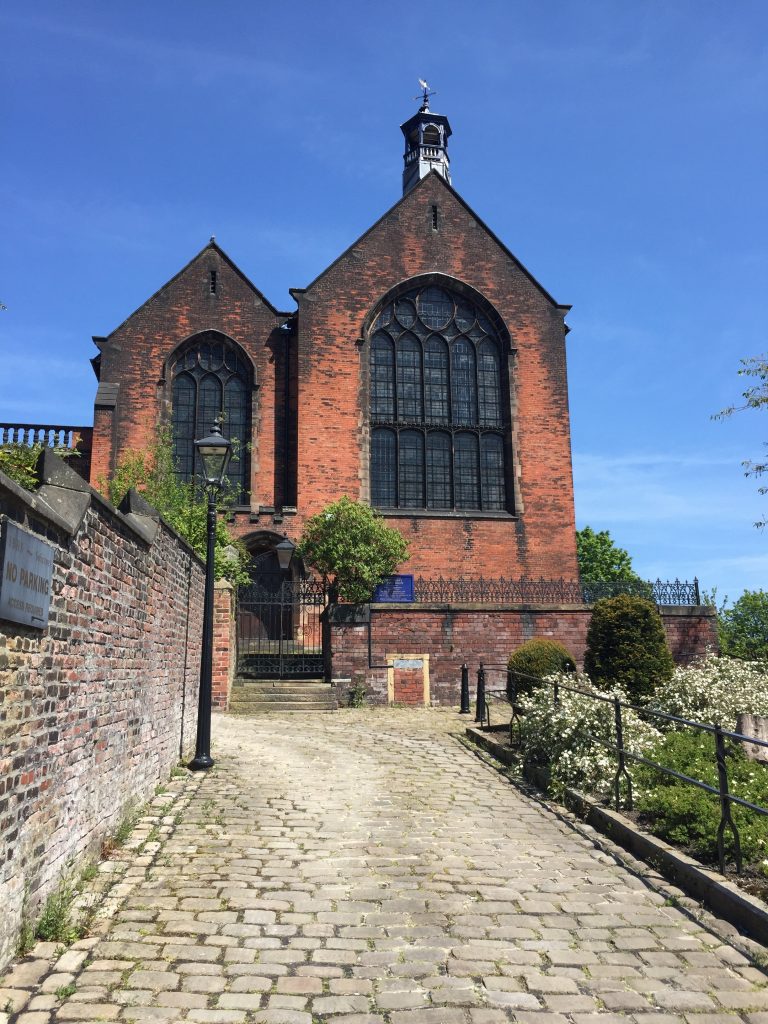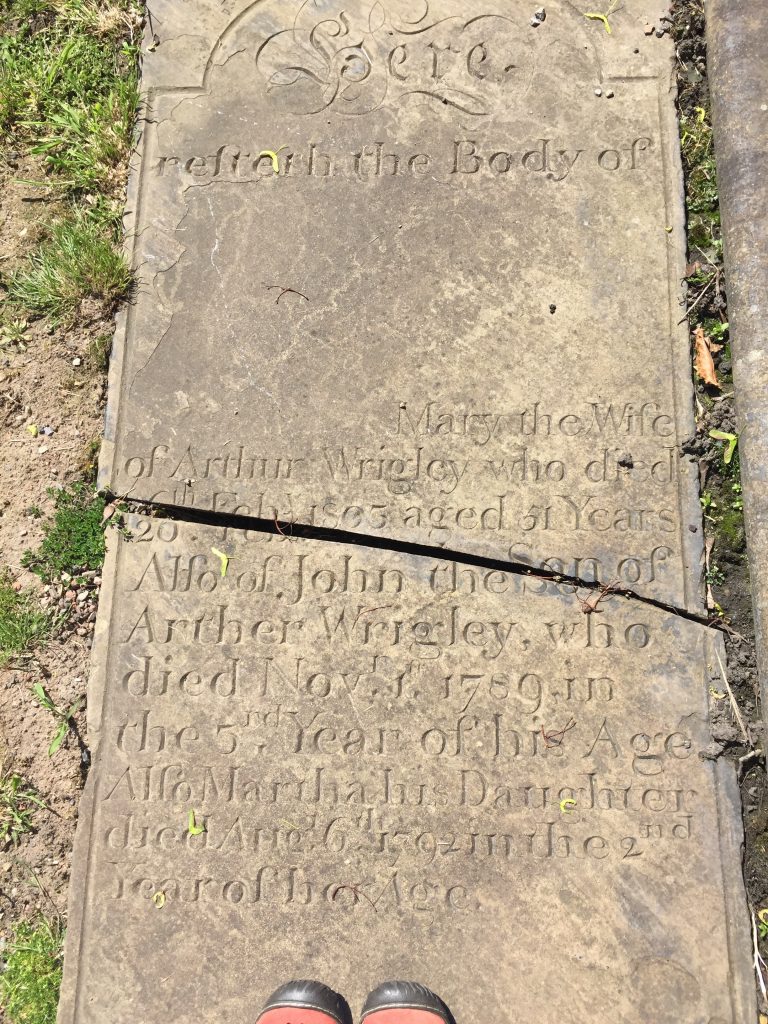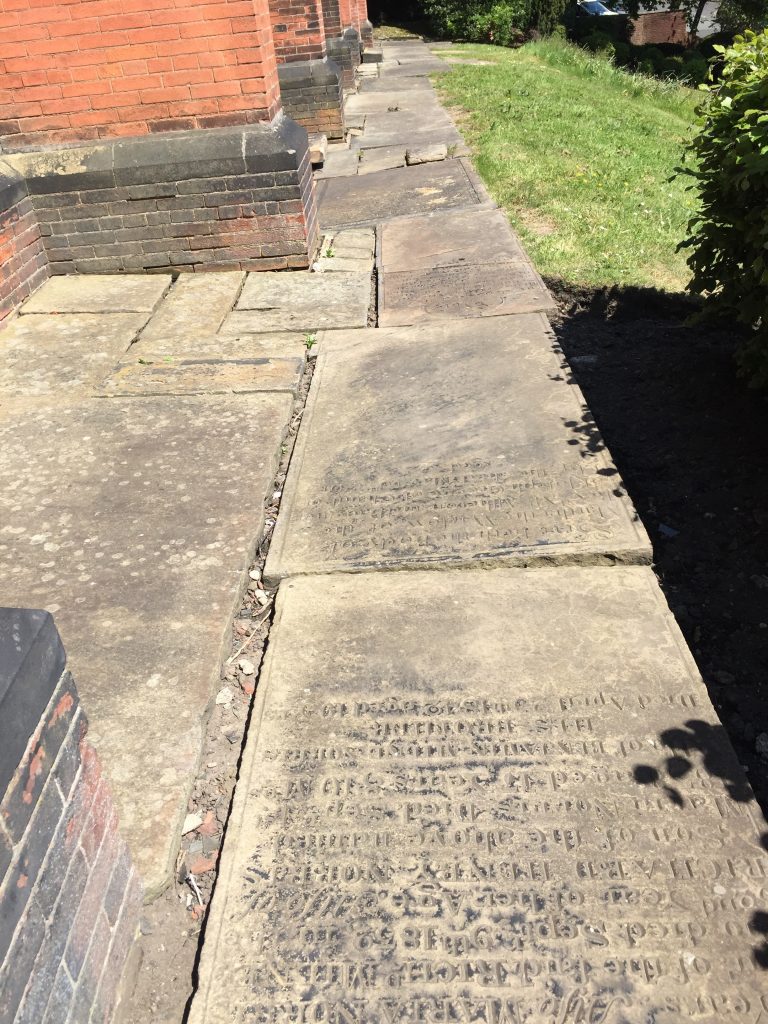For the past 3 weeks I’ve been on the trail of the Gibsons, specifically Samuel Gibson, collector of flora and fossils. I’d spent Tuesday in the company of this eminent self-taught ancestor as I viewed his herbarium and fossil collection at Manchester Museum. The Gibsons married into the Wrigleys. The Wrigleys had moved from Rochdale to Hebden Bridge and on one of my summer trips July 2017 I had visited St Chad’s in Rochdale where some of these Wrigleys were baptized, married and buried. During that visit I’d had a beer in a strangely named pub, The Baum, on Toad Lane, home of the Cooperative movement. I’d spent an hour in the museum there, opposite a large imposing church situated on a small piece of high ground. This turned out to be St Mary’s in the Baum. According to records online there were two grave stones bearing inscriptions to my Wrigley ancestors.

Knowing that most churches are kept locked I did my usual search for times when the church would be open – for a coffee morning, perhaps. I discovered that the church is a big venue for music and a series of lunchtime concerts was posted. This Wednesday was the turn of the Rochdale Retirement choir, conducted by ‘well known soprano Freda Farnworth.’ I did a double take. A Freda Farnworth was in my class, 3K, at Bolton School in my first year. She had an excellent voice and I remembered that she left school early to attend Chetham’s music School in Manchester. Could this be her? I tried to find her on social media, and through the chorus, but no bio or photo was forthcoming. Well, I guess I have to go to the concert. I decided to take the long route, going by bus just so that I could she what the route had to offer in the way of scenery. Nothing spectacular but you do see more traveling by bus rather than train because it’s so much slower.

When I arrived at the church and had paid my £5 I was really disappointed to see that Freda would not be conducting today due to a family bereavement. So I paid my 50p for tea and cake and joined about 20 more people at tables in the church. I overheard the ladies on the adjacent table talking about Freda so I explained my connection, and they thought that she had trained at Chetham’s. They would pass my business card on to Freda. Perhaps the choir would even perform my songs sometime! They pointed me in the direction of someone who could help me find the Wrigley gravestones but the information she gave me was again disappointing. This church only dated from 1866 and in 1966 the graves had been moved to another venue, Rochdale cemetery. Only a few flat gravestones had been kept at St Mary’s and they now formed a pathway around one side of the church. “But they all belong to previous ministers of this church,” she said.
The choir sang for an hour, conducted by a last minute replacement, an aging vicar who kept things rolling merrily, not to mention beginning the wrong songs, and the audience of around 30 souls obviously enjoyed it. “Well, where else can you get pie and peas, a piece of cake, a cup of tea and a concert for £5,” I overheard.


Concert done, the church soon emptied and I went to look at the pathway made of gravestones. As the lady had said, most of them were former ministers of this church or yeomen or manufacturers – obviously people of importance in the community. But I kept looking, somehow knowing I would find it. And there it was! The gravestone of my great great great great great grandmother, Mary Wrigley (nee Wilkinson) who died in 1805. Her 5 year old son, John, died in 1789 and 2 year old daughter, Martha, 1792. However, Mary’s husband Arthur is not named on the gravestone. But it certainly looks as if a space has been left for his name.
When I got home I tried to find his burial place and it would seem to be St Chad’s, St Mary’s sister church. ‘The Church of St Mary’s-in’the-Baum, Rochdale, originated in 1738 when a subscription deed outlined the need for a ‘chapel of relief’ in Rochdale due to the growing number of parishioners. The resulting chapel and associated churchyard was largely gifted by Samuel Chetham of Castleton Hall, who supplied the land and £500. The chapel opened for worship in 1742. It was a modest, brick-built, rectangular building of six bays with round-headed windows.
By 1905 the church was suffering from cracks and a sinking apse. The decision was made to build a new church, though the C18 building was well-loved by the parishioners and there was a clear desire to retain some of its character in the new design. A challenging design brief was drawn up including improved ventilation and light within the mill-ridden neighbourhood, greater interior decoration, greater capacity (682 persons was specified in one document), and also the retention of the character of the original chapel. The architect was Ninian Comper whose design for the new church sensitively addressed the brief.’



I finished my adventure my calling in at The Baum. I ordered a veggie chili and rice and was happy to see that they had Leffe on tap, something I haven’t seen before. I’d finished my half by the time my food arrived . . .45 minutes after ordering it. But it’s a nice pub and I had a good book with me, Millstone Grit by Glyn Hughes. I’d discovered it mentioned in a ‘Literary Calderdale’ flier, had ordered it from the library and picked it up from there before I had set off to Rochdale. It’s a fascinating glimpse of life in Calderdale in the mid 1970’s and one chapter is about the self-taught scientists of the Calder Valley. Sam Gibson doesn’t get mentioned by name but the milieu in which he gained his knowledge is written about very well.

Leave a Reply